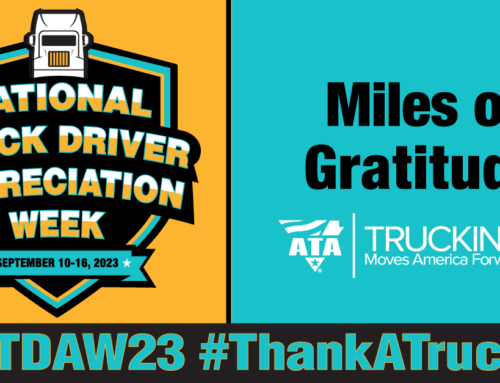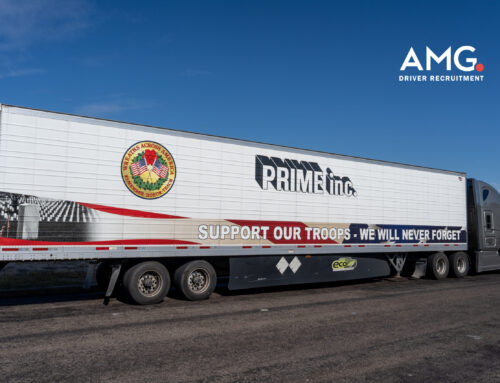The trucking industry is the backbone of our economy. Think of all of the goods we buy and use every single day. The majority of them are transported by trucks. This vital part of our economy is currently facing a crisis with an ongoing shortage of freight, causing supply chain issues for consumers. Why is this happening and what can be done about it?
Driving Factors of the Freight Shortage
The current freight shortage crisis is a complex issue with several contributing factors. One of the most notable factors is the shortage of qualified truck drivers, with demanding working conditions and an aging workforce being some of the primary challenges. Other factors include:
- Supply chain disruptions
- Infrastructure challenges
- Increased consumer demand
- Congestion at ports
- Fuel prices
- Equipment shortages
- Natural disasters and continuing effects of the pandemic
- Changes in regulations
Consequences of This Shortage
The ongoing freight shortage has several implications for truck drivers and consumers. Consequences range from economic and job market impacts to supply chain disruptions like delayed deliveries and reduced freight capacities. These factors increase transportation costs and ultimately burden the consumers.
Industries that heavily rely on trucking services like retail, manufacturing, and agriculture are impacted most by these shortages. Businesses that carry fresh produce are particularly affected. In order for the produce to arrive fresh and maintain its high quality, it needs to be transported quickly and efficiently. Due to the lack of truck drivers, these products face delays, compromising their freshness, thus resulting in financial losses.
Managing inventory with the shortage of goods creates challenges for businesses. The driver shortage results in a scarcity of inventory, creating a supply chain issue. Empty shelves along with delayed shipments to manufacturers are increasingly disrupting the smooth flow of goods through the supply chain. Companies are struggling to keep enough stock in stores for consumers to purchase, causing them to lose profits.
Solving the Freight Shortage Crisis
While this issue is complex with a variety of factors playing a role in the crisis, solving the truck driver shortage is a move in the right direction. Boosting recruiting and hiring efforts in the truck driver industry is vital to addressing the shortage and mitigating supply chain issues. Here are a few strategies companies can use to improve their recruitment efforts.
Improve Industry Perception
Enhancing the image of truck driving careers is vital to attracting new talent. Highlighting the diverse opportunities for growth, emphasizing the profession’s importance, and showcasing success stories can clear up any misconceptions and generate more interest from job seekers.
Utilize Active and Passive Recruiting Strategies for Truck Drivers
Passive recruitment is when a company aims to attract and engage with candidates not currently looking for a new job, while active recruitment is when a company is trying to attract candidates currently looking for a job. It can also mean continuously seeking the best candidates for a job, whether they’re employed or not.
Passive Recruiting Strategies
- Nailing down your ideal candidate personas
- Researching target candidates’ interests, online activity, and job expectations
- Developing relationships with drivers through social media, email newsletter subscriptions, etc
- Make sure your branding is on point, your website is easy to navigate, and you are as approach as possible for candidates researching you
- Staying up-to-date on industry developments and things the best driver candidates care about
Active Recruiting Strategies
- Understanding your target prospective driver candidates and getting in front of them online, such as through targeted ads
- Publishing job postings on your website, job boards, and through ads
- Making your open positions desirable compared to competitors, such as offering competitive salaries and benefits
Offer Competitive Compensation and Benefits
Offering competitive wages and comprehensive benefits packages can be a big incentive for job seekers to pursue careers in trucking. Providing attractive perks such as health insurance, retirement plans, and flexible scheduling can work to make the profession more appealing.
Enhance Training and Apprenticeship Programs
Investing in comprehensive training programs and apprenticeships can help bridge the skills gap and provide aspiring drivers with the necessary qualifications and experience. Collaborations between educational institutions and industry stakeholders can ensure quality training.
Target Underrepresented Groups
Expanding outreach efforts to underrepresented groups, such as women and minorities, can help diversify the trucking workforce. Implementing inclusive recruitment strategies and fostering a welcoming environment can attract individuals from various backgrounds.
Outsource Recruitment Efforts
Working with a recruitment company that specializes in truck driver recruitment can be a way to save companies time and money. Professional recruiters in this industry work with organizations that attract drivers that not only fit a company’s culture but are also high-quality candidates.
While the ongoing shortage of truck drivers is only one of the contributing factors to the freight shortage, addressing this issue is a step in the right direction. By using effective recruiting and retention strategies for these drivers, trucking companies can play a key role in overcoming this obstacle and minimizing interruptions in the supply chain.





Leave A Comment